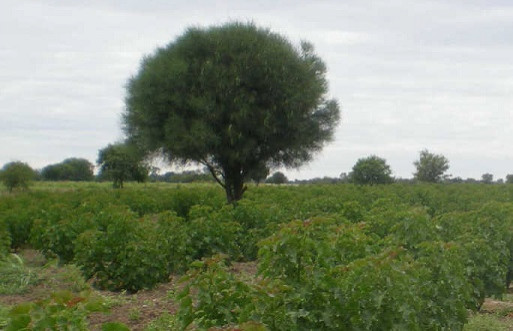Planting Trees To Combat Climate Change: Scientists Suggest Carbon Capture With Barbados Nut Plant

Could converting sections of the desert into forests help stave off the effects of climate change? While some German scientists say that planting trees in arid regions could help mitigate climate change.
Writing in the journal Earth System Dynamics, a team led by scientists from the University of Hohenheim say that one of humanity’s “Plan B”’s for controlling global warming might be to exploit that natural carbon capturing qualities of trees.
But, if you’re going to try to turn bits of desert into forest, you have to pick the right tree. The scientists have identified a likely candidate in the small tree Jatropha curcas, sometimes known as the Barbados Nut. While the plant is poisonous, its seeds can be used to make biodiesel fuel. And, what’s more, it is well-adapted to living in dry, hot environments.
“Based on recent farming results it is confirmed that the Jatropha curcas plant is well adapted to harsh environments and is capable of growing alone or in combination with other tree and shrub species with minimal irrigation in hot deserts where rain occurs only sporadically,” the researchers wrote. “Our investigations indicate that there is sufficient unused and marginal land for the widespread cultivation of Jatropha curcas to have a significant impact on atmospheric CO2 levels at least for several decades.”
In their study, the researchers estimate that one hectare (.003 square miles) of J. curcas plants could absorb up to 25 tons of carbon dioxide from the atmosphere every year. One billion hectares (3,900,000 square miles) converted to carbon farms would be enough to absorb a significant proportion of all the carbon dioxide added to Earth’s atmosphere since the Industrial Revolution, the researchers say. The cost of carbon capture with trees is, they estimate, about 42 to 63 Euros ($55 to $84) per ton of carbon dioxide.
The main limiting factor is access to water – J. curcas plants may be hardy, but they still get thirsty. For that reason, the authors suggest that coastal areas may be the best sites for foresting the desert. Sea water could be desalinated and piped to farms. The researchers admit that more data needs to be collected on the potential side effects of “greening” dry regions.
“From our point of view, afforestation as a geoengineering option for carbon sequestration is the most efficient and environmentally safe approach for climate change mitigation,” Vegetation has played a key role in the global carbon cycle for millions of years, in contrast to many technical and very expensive geoengineering techniques,” explains Becker.
SOURCE: Becker et al. “Carbon farming in hot, dry coastal areas: an option for climate change mitigation.” Earth System Dynamics 4, 237-251, 2013.
© Copyright IBTimes 2024. All rights reserved.





















